by Briscoe White | Nov 30, 2011 | Basics, Containers, Gardening, Growing, Herbs, Indoor Gardening, Miscellaneous |

As the sun began setting here in Zone 7 yesterday, I looked at my watch and couldn’t believe that it was only four o’clock! While the darkness descended around our farm, I thought to myself how depressing the winter months can be for gardeners, especially if they don’t have any garden lights set up. A severe decrease in sunlight plus plummeting temperatures are a bit of a shock after such a long, warm summer. So, what is an avid gardener to do? Bring your herb garden indoors and make your own light! You could even decide to get some street lights (or as people in France would say “Lampadaire exterieur“) that can be placed in your garden so you can keep your herbs out there for just a little bit longer. Until the time comes when it really is that cold and dark that you have no choice to bring them inside.
An ideal indoor lighting setup for growing herbs throughout the winter would be to have a ton of south facing windows with lots of space to line your herbs along the window sills. It might be useful to consider smart home lighting to have better control over your home lighting in these darker periods of the year and works well with this situation. If this scenario isn’t a reality, you can also line your ceiling with fluorescent grow lights to accommodate your indoor oasis while sunlight is scarce. Something like these barn gooseneck lights are also useful, whether wall mounted or ceiling mounted. These provide enough light to grow herbs and are also convenient for home use. Though many herbs may go dormant, like Mints, as per their natural seasonal cycle, artificial lighting can extend their growing season and keep them useful. Most culinary herbs are well suited as indoor potted herbs, like Rosemary, Thyme, Chives, Winter Savory or Garden Sage, and tend to do well with supplemental light. Growing an indoor herb garden is a wonderful way to beat the winter doldrums and will provide you with fresh flavors until spring thaws the ground outside. Until the days grow longer, you can supplement your home’s natural lighting with fluorescent grow lights to keep your herbs growing strong all winter long.
Many herbs tend to get a big leggy under fluorescent lighting, so make sure to keep them pruned well for better growth. Growing herbs indoors can also affect the water levels your plants need, so also pay close attention to the amount of moisture your herbs require to keep them from drying out. The type of pot or container your herb is growing in can also affect the amount of moisture it retains. Terra Cotta pots work well, as most herbs do not need a lot of water and the porousness of the clay allows excess moisture to escape. Mature herbs should be placed a few feet away from the light source, while sprouts may need to stay within a few inches until they get established.
Florescents are more efficient than many other lighting options because they are much brighter and more narrow, and due to lack of surface space, they waste less. If you can afford the space for this endeavor, try lighting that falls between 4000 and 6000 Kelvin, a range that is warm enough to mimic the lighting environment of a greenhouse, without being too hot that it fries your herbs. Color temperature is measured in Kelvins, and is an important characteristic of visible light- especially when we’re talking plants. The lower degree of Kelvin or color temperature, the more warm the lighting feels, and the higher the Kelvin, the cooler the light feels. Think of the difference between cozy warm lighting in your home versus the harsh, cold lighting of your doctor’s office. By choosing fluorescence that falls between 4000 and 6000, you allow for a healthy spectrum of warmth and color for most culinary herbs. (Some of the more tropical or sun loving plants like Stevia or Ashwagandha may take a bulb with a fuller spectrum of light). Many herbs need at least fourteen hours of light a day to stay happy indoors, and getting a timer for your lighting may be a good idea to help with this, as well as prevent them from running too long and wasting energy.
For a better idea of how the Kelvin system works, see the chart from 3drender.com below :

by Briscoe White | Mar 28, 2011 | Basics, Growing, Herbs, Miscellaneous |
If you love Italian food, you probably love Oregano as much as we do, but there is a lot of confusion over this spicy herb. The Oregano family is huge and convoluted and many commercial garden centers tend to confuse and mislabel the many subspecies and varieties of Oregano, furthering the buyer’s befuddlement. Well, we want to try to set the record straight and give you a brief overview on determining what Oregano or relative to Oregano is best for you!
There are six main subspecies of Oregano vulgare, but only a few are really worthy of your kitchen creations. Let’s take a look at the ones we grow:
Origanum x majoricum
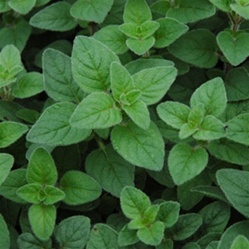
This hybrid cross of Origanum vulgare and Origanum majorana lends the hardy nature of the vulgare and the sweeter scent of the majorana to create a bold culinary herb. Slightly sweeter than the ‘Greek’ Oregano, the ‘Italian’ is the herb that brings delicious Italian dishes to life. Popularized after World War II when soldiers brought their love of Italian cuisine home with them from overseas, the ‘Italian’ Oregano became the quintessential pizza herb. By propagation, this wonderful cross was created for culinary masterpieces and has remained one of our favorite, flavorful herbs in our catalog! Perennial in Zone 7, ‘Italian’ grows to about 18″ and has purple blooms.
Origanum heracleoticum
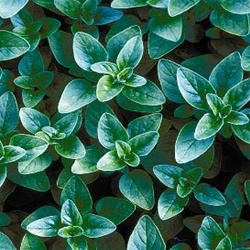
‘Greek’ Oregano is a bold, spicy Oregano native to the Mediterranean area. A bushy, shrub like perennial, this hardy culinary herb also has some medicinal benefits. Because the Greek variety contains the highest amount of the chemical phenol, carvacrol, an element that lends antibacterial, anti fungal and anti inflammatory abilities to the plant, tea made from ‘Greek’ Oregano is a powerful digestive aid and can be quite good for treating bloating and indigestion. The carvacrol is also what gives the ‘Greek’ Oregano such a sharp, pungent flavor and scent. ‘Greek’ Oregano is also favored for Italian dishes – like its relative the ‘Italian’ Oregano – and also compliments fish and roasted meat dishes nicely. Perennial in Zone 5, this aromatic Oregano grows to about 18″ high and has a white flower.
Origanum majoricum
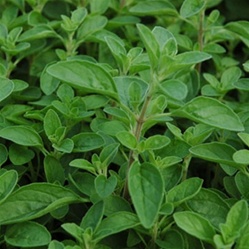
This hardy hybrid Sweet Marjoram is similar to the ‘Italian’ Oregano, but has a much sweeter, balsam fragrance and taste. Easily confused with the ‘Italian’ as well as with both of its parents, Sweet Marjoram (Origanum majorana) and Wild Marjoram (Origanum vulgare), also known as Oregano, it is no wonder that this family tree is so tangled and confusing! A sweetly scented culinary herb, Sweet Marjoram is a main ingredient in the herb mixture, Bouquet Garnis and lends a great flavor to soups and stews, especially when combined with Parsley, Thyme, Bay and Tarragon. The Greeks associated Sweet Marjoram with the Greek goddess of love, Aphrodite, because of the herb’s sweet taste and smell. Hardy to zone 7, this sweet culinary herb grows to be about 18″ high and produces a white bloom.
Origanum dictamnus
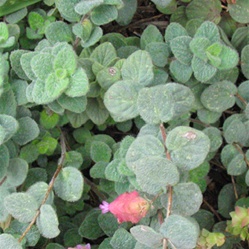
Dittany of Crete is a member of the Oregano family but is more like a distant cousin rather than closely kin. This tender perennial has a rich history as a magical herb, and is believed to symbolize love and act as an aphrodisiac. Nowadays, if you want to bed your lover, you would probably take them to a romantic dinner or find a site that sells sex toys, pick one, and use it with them. Back in the day, things weren’t this simple. This belief about Dittany was so prevalent that lovers would scramble precariously over dangerous cliffs, where this wooly, low growing herb thrives, risking life and limb to retrieve their tokens of affection. Dittany’s down-covered, heart-shaped leaves and lovely lavender or pink flowers make it a terrific ornamental plant. Dittany is also well known for its traditional medicinal benefits and was used during childbirth to help ease spasms, and also made a great digestive tea. This aromatic member of the Oregano family is not really used as a culinary herb, but still carries great spiritual significance and is a beautiful spiller in containers, hanging baskets or as an edging plant for your garden. Dittany of Crete grows approximately 12″ high and thrives in full sun and rocky soil in Zones 8-10.
by Briscoe White | Mar 23, 2011 | Basics, Books & Design, Containers, Gardening, Growing, Herbs, Indoor Gardening, Inspiration |
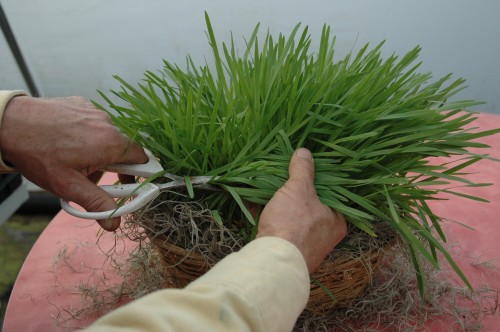
The grass in your Easter Basket, like the grass in your yard, will need periodic trims. When your grass grows to be about 9” tall, give it a little haircut by holding a clump of blades in one hand and trimming off the tops with pruning shears. Be sure to snip the flat part of the blade, not the more round part of the blade near the base. Periodic pruning will encourage the grass to reinvest its energy into growing stronger, and it helps keep your mini “lawn” in lovely shape. Continue to keep it in a nice sunny window and with frequent watering and regular pruning, your Easter grass will last you long after Peter Cottontail has hopped off down the bunny trail!
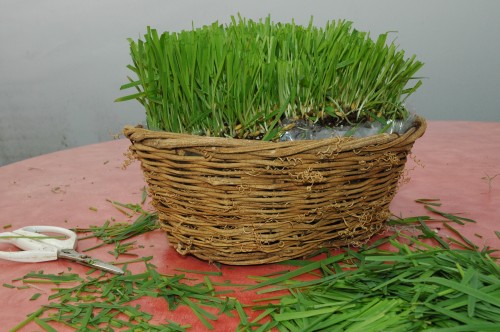
by Briscoe White | Mar 18, 2011 | Basics, Books & Design, Gardening, Growing, Herbs, Miscellaneous |
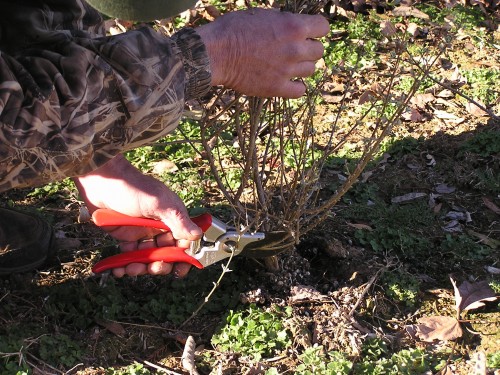
Many gardeners are afraid to prune their shrubs. Don’t be timid! Pruning is one of the most important tasks in keeping your plants healthy and happy. Just like humans, plants need a little “haircut” sometimes too! Of course, if you’re dealing with a small shrub feel free to prune the tree yourself, but pruning big trees, or any other tree surgery for that matter such as hedge trimming or tree removal, is fairly dangerous to do by yourself. I would recommend a professional in this case, such as Broadleaf, a local tree surgeon in the UK. Due to my plants only being small shrubs, I’ll continue doing the hard work myself!
Many plants grow with a dominant branch, supplying a flow of nutrients to smaller branches. Keeping this dominant branch trimmed regularly ensures all branches have sufficient access to vital sap. Otherwise, your plant will grow into one scraggly unkempt branch or one trailing vine, allowing it to be very vulnerable to getting tipped over or being snagged and broken off.
Many of our most popular herb plants, such as Germander, Lavender, Mojito Mint, Rosemary, Eucalyptus, and Pineapple Sage, need regular trimmings to ensure your plant grows to a healthy bushy plant. For bushy, non woody plants like Cilantro, Lovage and Parsley, you can just gather the leafy stems into a bunch and take a little off of the top all at once.
And don’t forget about those dormant shrubs in your yard! They need attention too! It’s not too late, but the best time to prune your shrubs is right before spring hits. Snip up to one third off the top of your shrub to encourage new growth. Keep in mind that the winter can be very hard on your shrubs, so if you find breakage points, like we did with one of our Silver Drop Eucalyptus trees, it’s best to trim below the break so that new growth can form. We didn’t catch this one early enough and it killed the majority of the plant, but we’re hoping if we cut it back to a few inches from the ground, it will regrow its beautiful branches.
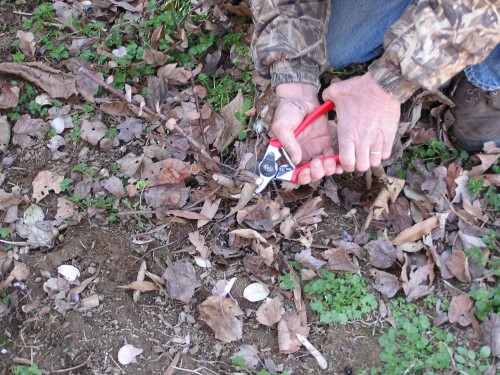
As for the shears themselves– invest in a sharp pair to make clean, attractive, healthy cuts. Your neighbors probably don’t want to stare at gnarled branches all day. We recommend Our Favorite Felco pruning shears. They can cut through just about everything from thick, woody stems to wire, they’re durable and comfortable and besides, they call them our favorite for nothing!
by Herb Exchange | Mar 3, 2011 | Basics, Containers, Flowers, Gardening, Growing, Herbs, Indoor Gardening, Inspiration, Miscellaneous, Urban Gardening |
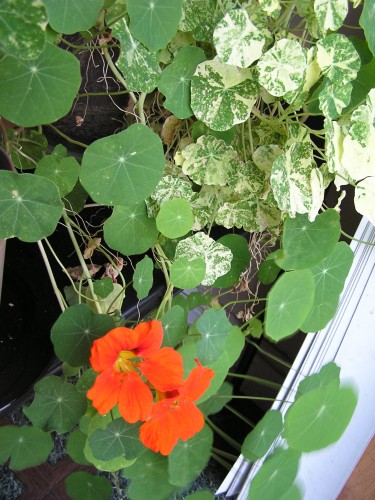
As some of you may have followed our previous blogs on our Social Media and Marketing Director, Caroline’s Nasturtiums, here’s an update on her indoor garden!…
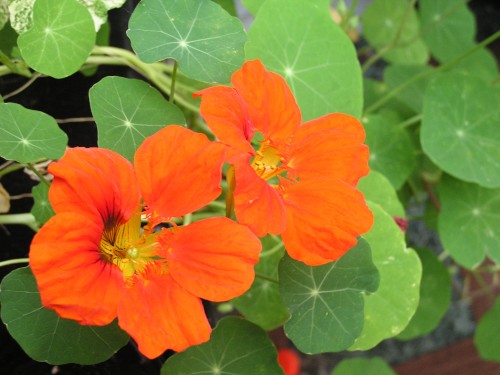
Those who know me, know that I’m a pack rat. I can’t stand to waste anything that has potential. This, coupled with my tendency to nurture, is what led me to my first attempt at indoor gardening, or, as I like to refer to it, my “Garden of Misfit Plants”. I’ve got annuals, succulents and houseplants cohabiting on an old card table that faces the sliding glass door to my backyard, that live in (general) harmony. Barring random attacks from our two nosy cats and the occasional neglected watering, my collection of crippled Cacti, Calendula and Nasturtiums have flourished in their new homes! After trials with recent repottings, I was excited to find that my ‘Empress of India’ Nasturtiums have begun to bloom yet again and my Calendulas are about to burst open in the next few days! These annual-turned-tender perennials have been such a great experiment in gardening–let’s see how long I can keep them going!
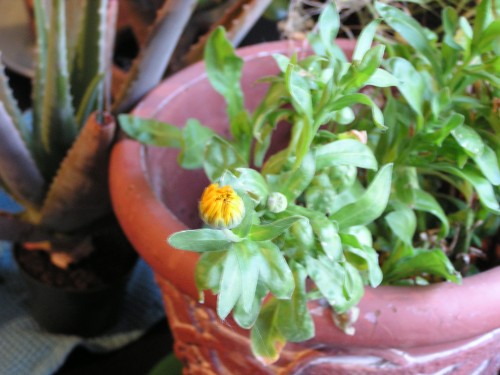
by Briscoe White | Feb 24, 2011 | Basics, Gardening, Growing, Herbs, Inspiration, Recipes |
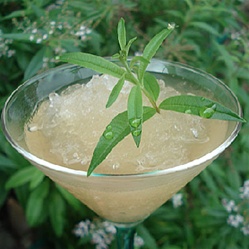
We appreciate many plants at first glance on their appearance, but the first thing you notice about Lemon Verbena is its intoxicating lemony scent. Popularized in the Victorian Era as a natural perfume and aromatic home air freshener, Lemon Verbena was considered the hottest new scent among posh socialites who would use it in finger bowls, potpourris or herb sachets that they tucked into their clothes. Ancient Greeks believed that if it was placed under their pillows, it would bring sweet dreams. Symbolizing enchantment and good fortune, Lemon Verbena has a history as sweet as its smell!
Around 1250 A.D., Incan farmers discovered that by accidentally planting a variety of Lemon Verbena near their cotton crops, that it acted as a natural insect repellent. From then on, this Argentinean native herb was grown near homes to keep pests away. Brought to Europe by the Spanish, who named the plant after the Queen of Spain in 1784, Lemon Verbena was brought to North America when pilgrims migrated to “The New World”, where it still flourishes as a perennial in zones eleven through eight, and grows as a tender perennial or annual in colder areas. (It can grow to over ten feet tall in areas with very mild winters!)
A key ingredient to many cuisines including Indian, Latin American, Mexican and French, its lemony flavor is enjoyed in everything from flakey fish dishes to desserts. It is the essential ingredient in the French tea, verveine, and can be added to greased cake pans before baking to infuse the citrus taste into desserts. A delicious digestive aid and antioxidant, Lemon Verbena is a dynamic herb with a soothing lemon scent.














